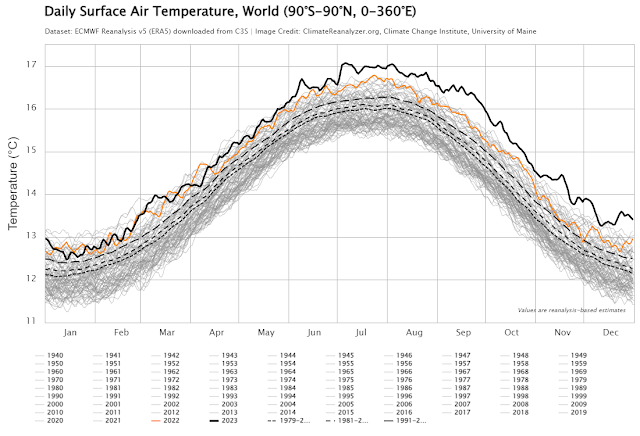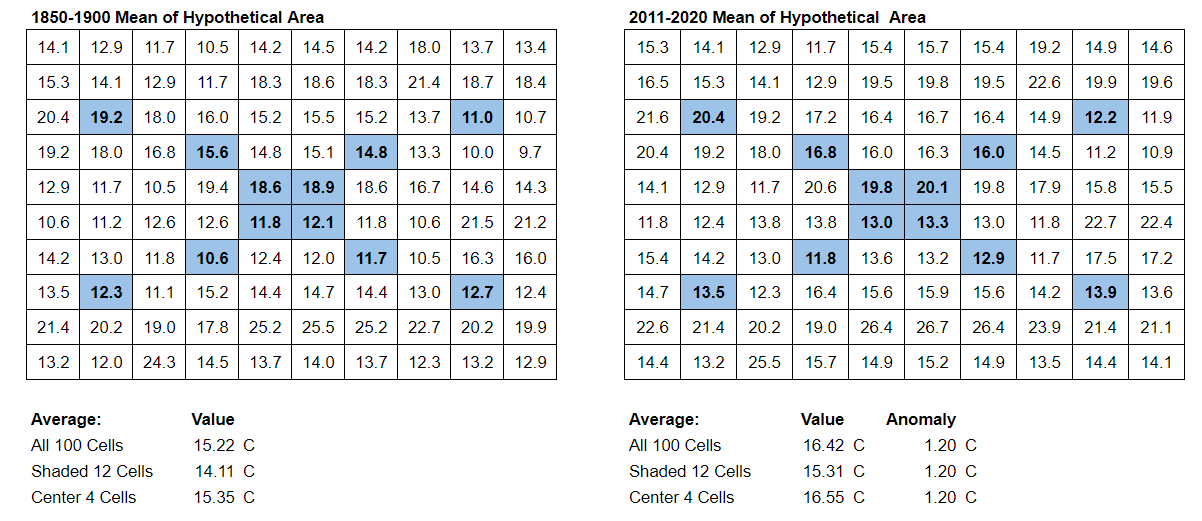2023 Global Mean Surface Temperatures

Most of the GMST temperature data is in for 2023, and it was a doozy. Around June 1, GMST headed into unchartered territory, and they stayed there for the rest of the year, with only a few days not record temperatures for the instrumental record. Now with the the availability of daily reanalysis data, it's been possible to track this on a near daily basis. ClimateReanalyzer data for 2023 from ERA5 At the end of 2022, even with the likelihood that El Niño conditions would develop, most thought that there would be a low probability that 2023 would be a record year, beating 2016/2020, as you can see from this graph by Zeke Hausfather. 2023 came in significantly warmer than the range expected at the beginning of the year. When large El Niños developed in 1997 and 2015, it was the following year that became record years, and there's good reason to think this pattern would continue, though since scientists don't know exactly why 2023 was so warm, we should perhaps take that expe...

.png)